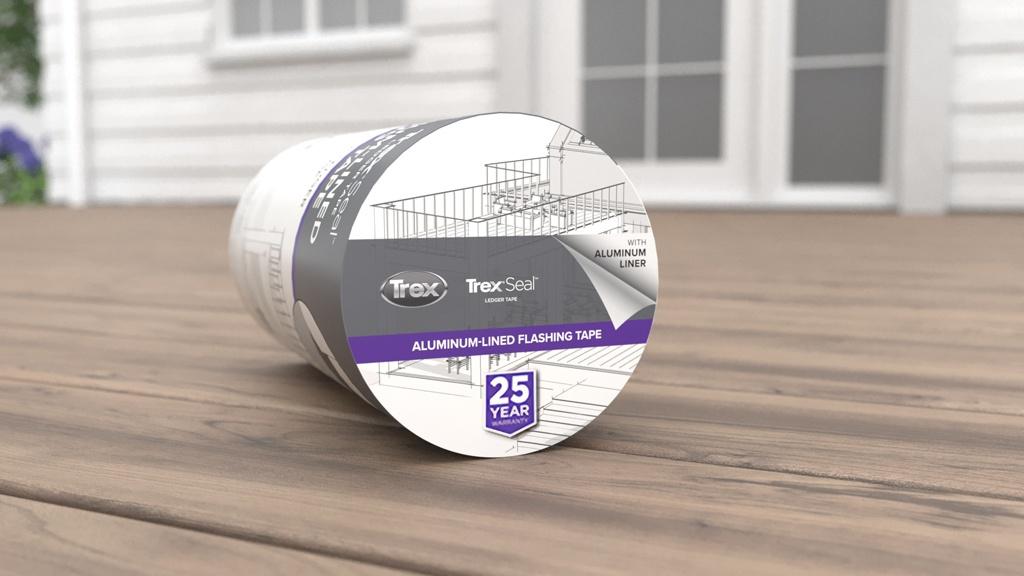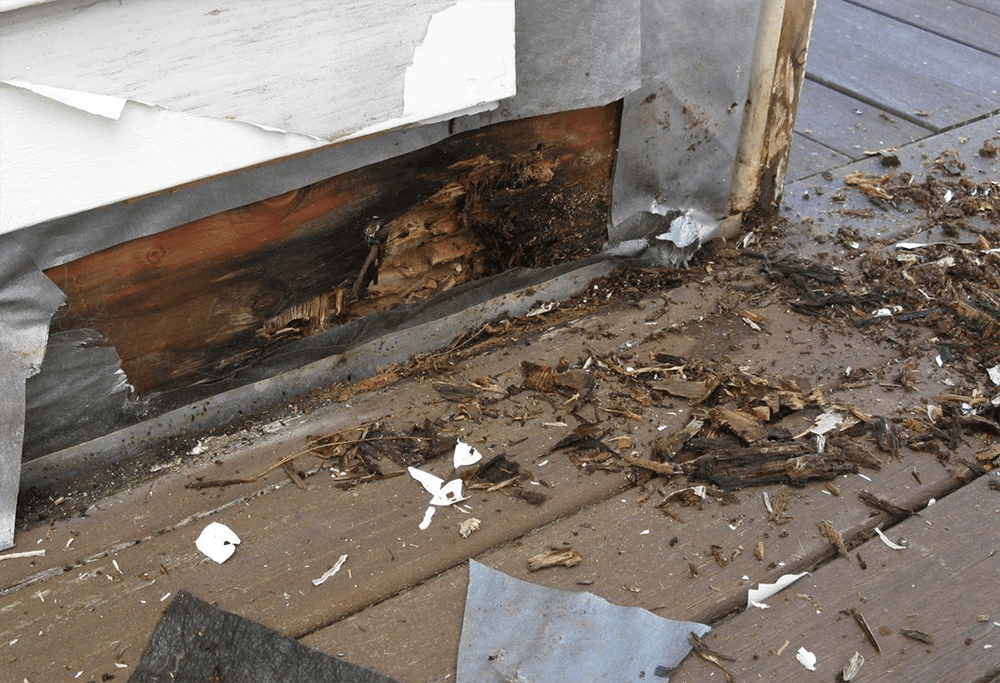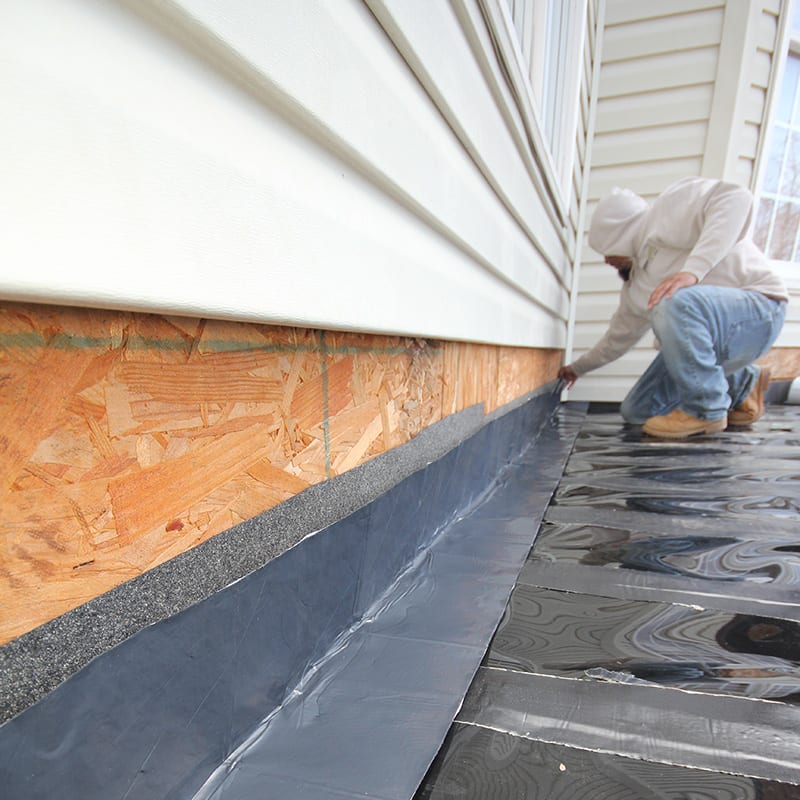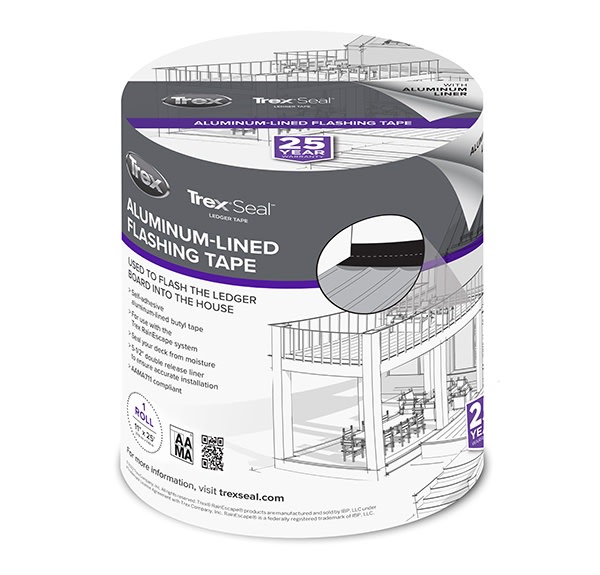
Let’s play deck detective. We’re so sure that you’re going to ace this, we aren’t even going to provide clues—just the crime scene:
You’ve just arrived at your new customers’ home, and they lead you around back to the deck you’ve come to evaluate. You’re standing there with the homeowners, looking at a failed deck. You draw their attention to the critical flaw that’s rendered their backyard retreat unusable.
What are you pointing at?
More likely than not, you identified the suspect as the ledger board: the board attached to the house that serves as the main support for the deck joists—and the primary source of deck failure that can literally be the downfall of its entire structure.
You did so well on that first one, let’s try a follow-up question:
What caused the ledger board failure?
We bet you got this one, too: moisture. Water is, without a doubt, the enemy of wood. But in most deck installations, a small gap is left between the house and the deck that allows water to seep down and onto the ledger board. That's opportunity. Over time, that water can collect and penetrate the wood, and eventually cause decay.
And that’s where our hypothetical homeowners find themselves: in the aftermath of a rot-induced collapse, originating from an improperly protected ledger board.
WARNING: The evidentiary photo below is graphic.

Crime Prevention
We all have ideas on how the crime above could’ve been avoided, and they all probably come down to proper use of ledger flashing.
The “products of interest” in this case are metal flashing and flashing tape. Right? Well, yes and no.
First, a quick description of these two:
Traditional metal flashing is inexpensive and quick to install, but it’s attached with nails or screws. Beware of the holes created during installation: They allow water to seep in and can cause wood to rot and fasteners to rust.
Flashing tape is self-adhering and offers better waterproofing as it creates a tight seal on boards and around any fasteners. Be on the lookout for flex back and slumping, and remember that if you use staples to tame the tape, you’ve introduced holes. Check out Flashing: 4 Types of Peel and Stick Waterproofing for profiles of asphalt-based, rubberized, butyl-based, and block polymer flashing options.
So, what’s the identity of the mysterious third option?
Name: Trex Seal
Alias: Aluminum-Lined Flashing Tape
MO: Combining the best performance features of metal and tape flashing in one easy-to-use product.
Trex Seal isn’t just a “product of interest” for your deck installs, it’s the most interesting product—and we’re not the only ones who think so. HBSDealer awarded Trex Seal with a 2022 Golden Hammer for innovation and PRODUCTS magazine recognized it with the 2022 Gold MVP Award in Weatherization.
This product is definitely earning commendations. So, what’s the 411 on Trex Seal?
Trex Seal: To Protect and Serve
Protecting the ledger board is critical to the structural integrity and longevity of your deck. That’s just the facts, ma’am (/sir). And Trex Seal is dedicated to service. Designed specifically for deck applications both in function and size, it takes ledger flashing to a whole new level.
Trex Seal Ledger Tape is flexible, sticky, and reinforced with an aluminum lining. This flashing tape covers the entire surface of the ledger board and creates a seamless seal over any gaps between the ledger and your deck substructure. The result: optimal protection against moisture and water penetration.
Trex Seal’s aluminum liner is the distinguishing characteristic that really makes it stand out in a line up. This reduces or completely eliminates the need for stapling because it minimizes unruly flex back and slumping, holding its shape better than unlined tapes and those with a thermoplastic polymer lining.
The aluminum lining also allows you to pre-bend the tape to fit the inside corner formed by the ledger and building wall. It’s what Trex refers to as “obedient.” And we all can appreciate a copperative, non-combative ledger tape.

Trex Seal Ledger Tape, shown with Trex RainEscape system (optional)
Additional highlights from the Trex Seal work up:
- A superior alternative to traditional ledger flashing
- Waterproof protection as opposed to water resistance
- Seals any gaps between the ledger board and the substructure
- Convenient 5.5″ double release liner for accurate installation
- AAMA 711-13 compliant
- Backed by a 20-year warranty
Established Procedure (aka Trex Seal Installation)
Trex Seal’s aluminum lining and 5.5” double-release liner let you bend and set the tape in place without flexing back like other flashing tapes, making it much easier to apply than alternative flashings. Just follow these steps:
- Mark a 5.5” line above the ledger board under the siding.
- Fold the tape in half, remove one of the release liners, then press to adhere to the vertical surface.
- Remove the second release liner and press firmly against the ledger.
- Cut along each joist side then fold the tabs down.

Trex Seal installation
If you’re installing Trex Seal with the Trex RainEscape Deck-Drainage System, the steps are similar, but with no cutting of tabs:
- Install the Trex RainEscape system.
- Mark a 5.5" line above the ledger board under the siding.
- Fold the tape in half, remove one of the release liners, then press to adhere to the vertical surface.
- Remove the second release liner, unfold the Trex Seal and press firmly against the Trex RainEscape system
For information on Trex RainEscape, the ultimate drainage system for a dry, functional space under your elevated deck, check out Defy the Elements with Trex RainEscape.
TIP: Calculate your Trex RainEscape materials and costs with the DIY Home Center Trex RainEscape Estimator.

Trex Seal installation with Trex RainEscape
You want to review the video evidence? Click below to see how easily you can prevent the crime of ledger failure with Trex Seal Ledger Tape:
Case Wrap-up
After careful consideration of the evidence, we agree with these findings:
“Trex Seal offers a superior alternative to traditional ledger flashing. It is wide enough to provide complete coverage of the ledger and forms a tight seal on boards and around hardware to create a comprehensive waterproof barrier. And, with its easy-to-apply design, there’s no reason for any deck to be left vulnerable to the elements and premature failure.” - Dave Kile, founder of Trex RainEscape
For a strong deck, start by protecting the ledger board. Start with Trex Seal. Case closed.
Be sure to check your local building codes before starting your deck project and follow all rules, regulations, and requirements.





























